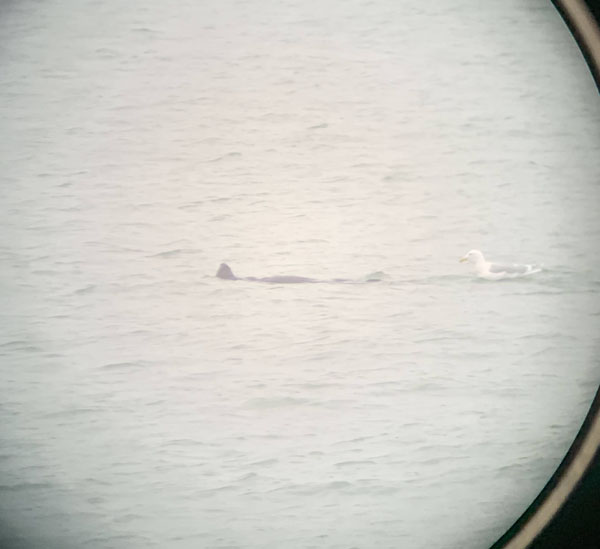After Nome, we returned to Anchorage and caught the early plane the next morning (March 26) to Kodiak.
Kodiak is the 2nd largest island of the United States, 2nd only to Hawaii’s Big Island. Kodiak (the Island, not the town) is big, but its population is small, probably under 20,000, most of whom live in the town of Kodiak. There are only 5 or 6 other towns (none of which has over 300 residents) on the island. Over 90% of Kodiak Island is set aside as a preserve for the 3,500 or so Kodiak Brown Bears living there. Kodiak Bears are contenders for the claim to be the biggest bear on earth, challenged only by Polar Bears for that distinction. The only roads, totaling less than 100 miles on the whole island, basically connect the part of the very irregular coastline of the island with Kodiak Town. At the south end about 40 miles from Kodiak town, is Pasagshak Bay, where my nephew Mike has a house
We had expected to meet up with Mike in Kodiak town the day after our arrival there, to spend the rest of our time on Kodiak with him. The weather was extremely uncooperative, with snow, wind and fog. So much so that Mike was unable to make it to Kodiak because of weather related cancellations. With the help of messaging with Mike, and intrepid driving in adverse conditions by Adam we made it out to Pasagshak. There we spent a most enjoyable 3 days. Thank you Mike, but we would have preferred your company and are very sorry that you could not join us.
Pasagshak
The “settlement” (not a town)
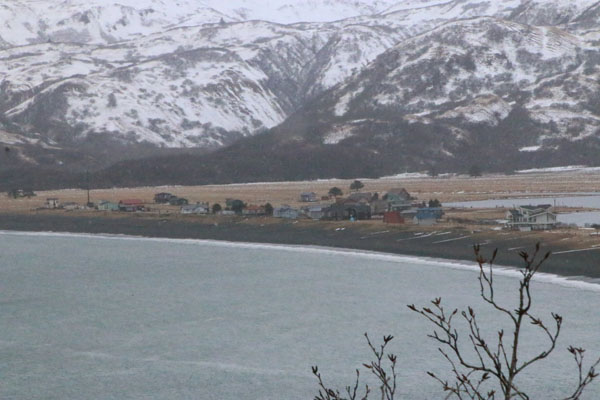
Mike’s place

We enjoyed Mike’s largesse not only in our accommodations, but also his on-site frozen fish as the main dish for an exceptional dinner prepared by Chef Adam. We chose salmon over halibut.

The fireplace got good use and established a cheerful and cozy atmosphere.
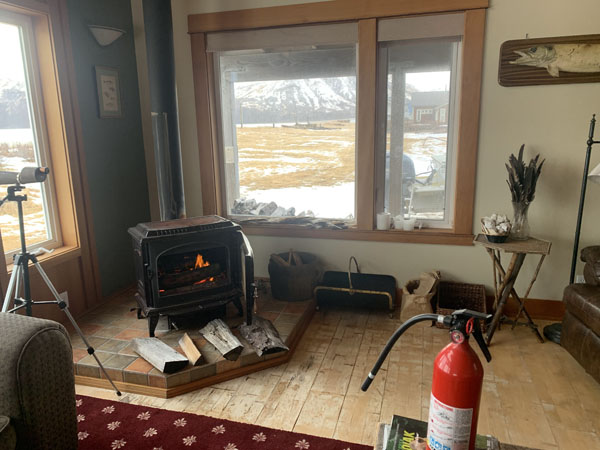
The view from the great room.

And Adam’s early morning beach walks (I abstained, not wanting to wear myself out) were — beautiful:
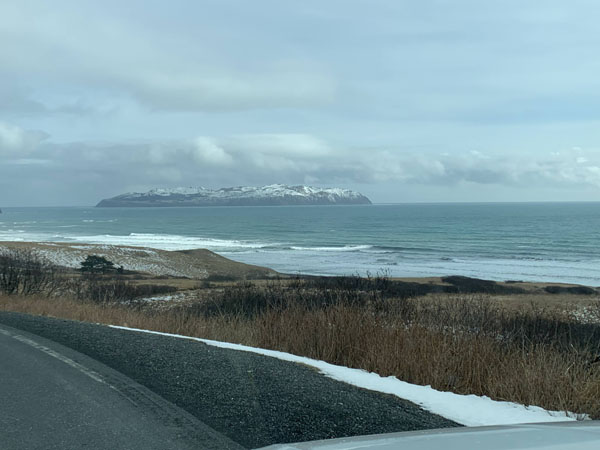
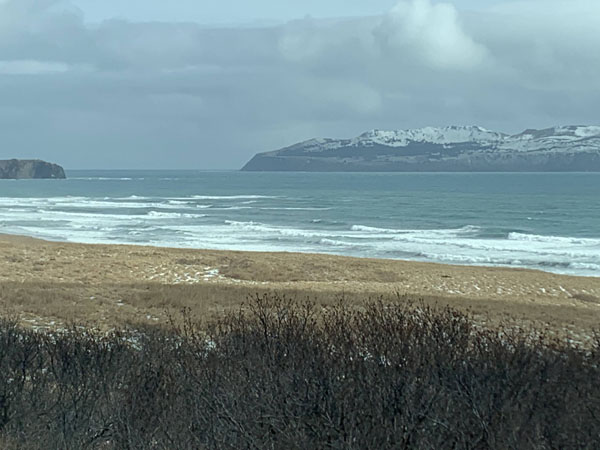
But back to our chronology.
Our first stop for birding was near the water in or near the Town of Kodiak, where we just happened to coincide with another birder, Stacy Studebaker. She was very helpful to our search for birds. We later found out she is or has been the President of the Kodiak Audubon Society, as well as a published author, naturalist, radio talk show host, botanist, musician, artist, etc. A couple of her childrens’ books are available on Amazaon.
The Unique Winter Birds of Kodiak
We saw many Bald Eagles hanging around the water in order to better indulge their taste in fish.
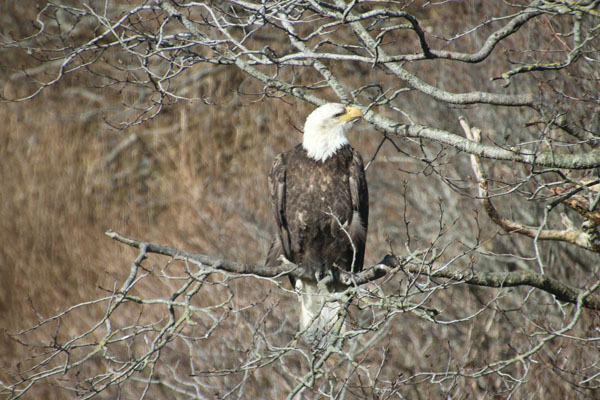
Also present in big numbers were beautiful Emperor Geese, which were the main target of our birding on Kodiak.
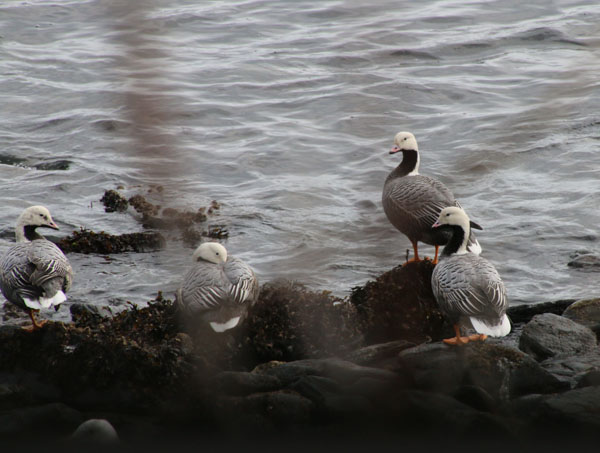
These somewhat rare Steller’s Eiders were difficult to identify in the distant fog, but the photo shows them well:
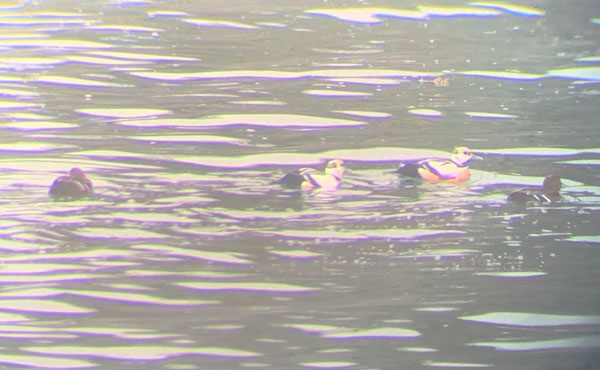
And wrapping up our bird photo exhibit is this pair of Harlequin Ducks, which were present in good numbers but somewhat obscured by the heavy snow flakes:
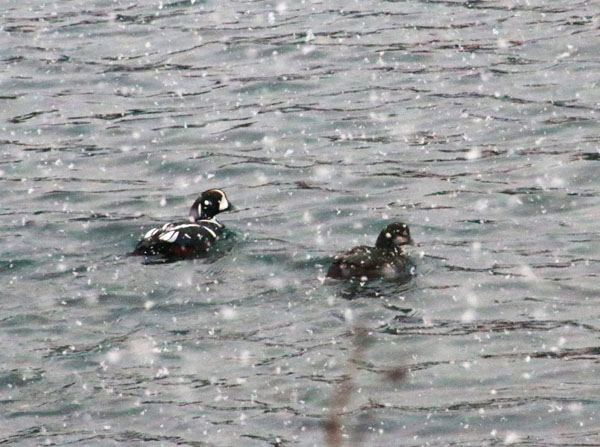
Other birds seen but not pictured above (or in the case of Glaucous Winged Gulls, below) were Tundra Swans in flight, a busy Northern Shrike near Pasagshak, and Black Oyster Catchers.
The Animals
We were there too early to see any Kodiak Bears. But this Sitka Black Tailed Deer was one of several seen:
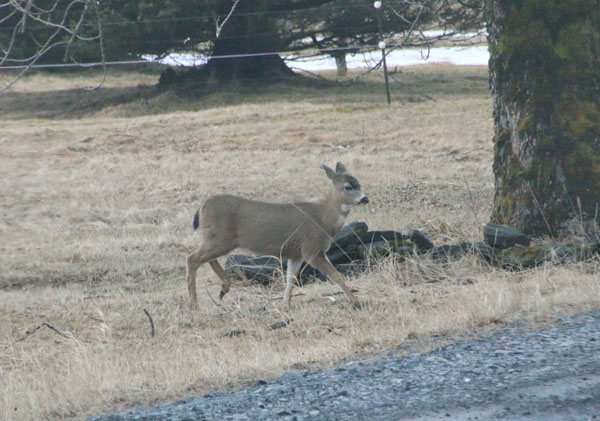
This Sea Otter cruising Pasagshak Bay is being trailed by a hungry Glaucous-winged Gull. We saw a couple of groups of 8 or 10 Sea Otters near Kodiak Town
